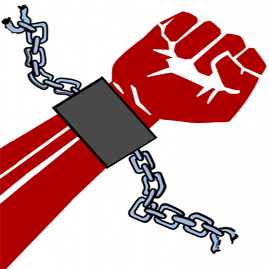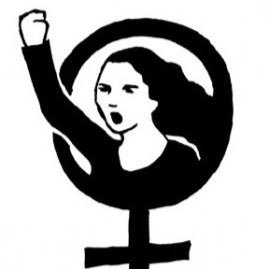| |
When one hurts or kills a women
one hurts or kills hummanity and is an antrocitie.
Gino d'Artali
and: My mother (1931-1997) always said to me <Mi
figlio, non esistono notizie <vecchie> perche puoi imparare qualcosa da
qualsiasi notizia.> Translated: <My son, there is no such thing as so
called 'old' news because you can learn something from any news.>
Gianna d'Artali
CLICK HERE ON HOW TO READ
ALL PARTS OF THIS SPECIAL
<The stench of death>
<Canada's murdered women and girls.>

Between 8 Nov 2021 and April 2022 AL Jazeera published a serial of
articles (except one i.e. an Al Jazeera team)
all by Canadian-French and better said Cree/Iroquois journalist Brandi
Morin about femicides of Canadian Indigenous women and girls of which each word is so
heartbreaking that it takes a lot of courage to read the whole serial. Still I challenge you to do so! I divided it according to the
number of articles and quoted from them ending with a read more URL.:
Related:
CLICK HERE ON HOW TO READ
ME
The Guardian
21 July 2022
The long read.
By Hugh Brody
<<'The deepest silences': what lies behind the Arctic's Indigenous
suicide crisis. For years I lived with the Inuit community in Canada's
far north. But it was only later, when the suicides began, that I
learned of the epidemic of abuse that had unfolded during that time.
Looking back on it now, I have to be careful about reconstructing or
selecting memories in the light of all that transpired. In 1970, as part
of my work for a research group within the Canadian Department of Indian
and Northern Affairs, I moved to the Arctic and began learning the Inuit
language, Inuktitut. My girlfriend, Christine, and I ended up living in
a settlement named Sanikiluaq, located on the Belcher Islands, some 90
miles from the Hudson Bay coast of Arctic Quebec. The Canadian
government had established this settlement in the 1960s, the result of a
postwar policy to incorporate all of the country, even its remotest
edges, into the Canadian nation. Such policies came with a new
conviction that the far north had vast economic potential. Although life
in Sanikiluaq was now based on the new government settlement, this was
an Inuit world, where language, culture and links to the land continued
to be very strong.
During my career as an anthropologist, I have written much about my work
with and for Inuit, but I have written very little about Sanikiluaq. The
beauty of those islands and of the people for whom this was their home
were clear to me then, and are so now as I bring them to mind. But there
is a thread of darkness running through these memories, intimations
embedded in the stories that the people of Sanikiluaq shared with me.
There was also a shocking reality that I failed to see. These stories
raise questions of life and death that have been central to Inuit
experience, and are turning out to be of urgent importance for us all.
At the time I arrived, white people from the south, who the Inuit called
the Qallunaat, had overwhelming influence and authority. Most were there
either to transform the Inuit – and supposedly help them through the
confusions of that transformation – or to take over possession and
management of the land on behalf of the Canadian government in the
south. The Inuit were expected to adopt a new religion, learn about the
world of the south in schools run by southerners, and live more like
other Canadians. When describing to me their feelings about these white
people, lnuit in Sanikiluaq often also used the Inuktitut word ilira, to
express awe (as in relation to ghosts) and intimidation (as in relation
to powerful elders or shamans).
....
Christine and I lived as much as we could outside the norms and
attitudes of most Qallunaat. This did not make for easy relations with
the other southerners living there. The one other Qallunaat who did like
to visit us was a man named Ed Horne. Of the three schoolteachers in
Sanikiluaq, Horne had responsibility for the younger children. He
ignored the Qallunaat's disdain for our small shack at the edge of the
community. By spending time there, he had dissociated himself from the
settlement manager and the other teachers (a married couple), with whom
he had had a serious falling-out. In defying the Qallunaat's disapproval
of us, Horne was suggesting that he was not really one of them – an
implication re-inforced by his saying to me, as I recall, that he was
part indigenous. But however much he might have wished not to be
identified as Qallunaat, he was very much seen to be one by the Inuit,
and treated as such. And they were right: we would learn, years later,
that Ed had been born into a white Canadian family in provincial British
Columbia. As I recall, Horne would visit most days when we were in the
settlement. I also remember how ambivalent I felt about his visits. I
was often embarrassed by the way he behaved with Inuit who were
visiting, and dismayed by the mix of friendliness and competitiveness –
and, at times, obvious hostility – that he showed towards me.
....
In all the time we knew Horne, neither of us ever went into his house.
This was unusual – there was no other house in Sanikiluaq that I did not
visit. I can bring it to mind, though. The windows were always covered
by some kind of thick curtain. All light shut out; any possibility of
his being seen at home removed. The dangers of retrospect grow around
that house and its thick, concealing curtain. We did not look hard
enough at what it meant. But we did think it very peculiar. Then came
the trashing of his house and the apparent suicide of the young man who
did it. It happened when I was away. As it was told to me, Horne had
come back to his house to find his living room had been smashed up – the
lights, the furniture, all his belongings. The young man, a teenager,
who had done it then got on a skidoo and drove out on to the ice, and
was never seen again, presumed to have killed himself. This was some
years before the outbreak of suicide in the north. It is one of only
three cases that I knew about during the 10 years – 1971-81 – that I
worked there. So it was both shocking and bewildering. The Inuit who
reported the events to me at the time seemed unable to explain how this
could have come about, or why that young man should have been so
disturbed and self-destructive. This brings me to the troubling crux of
it all, the aspect of the story that has haunted me since I first heard
of Horne's arrest in 1987. Why did we not raise the possibility that he
was something more significant than an unpleasant misfit? How did it
never occur to us that he might be secretive and hidden because he had
something he needed to hide? How come no one – as far as I know – sought
an explanation of the attack and the suicide? No one seems to have
looked at what the relationship might have been between Horne and that
desperate former pupil of his.
Revelations about sexual abuse of Inuit and First Nations children would
come to dominate thinking about the north (and the rest of Canada) in
the 1990s and ever after, but at that time had not yet come to light.
The cases against Newfoundland priests, whose crimes against children
were the first to come to the Canadian courts, took place in the 1980s.
In the early 70s people were less likely to think of priests or
schoolteachers as possible sexual predators. It seems naive to have
failed to recognise that possibility, and perplexing: many of us were
intensely sceptical about missionary activity, but our scepticism did
not include paedophilia. We lacked the knowledge, and perhaps even the
language, with which to raise the appropriate suspicions about Horne. >>
Do read the whole story here:
https://www.theguardian.com/news/2022/jul/21/the-deepest-silences-what-lies-behind-the-indigenous-suicide-crisis
Related stories:
<Resistance and Residential Schools.
...and
<Facing history and ourselves ...
|


